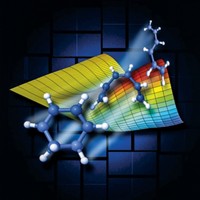Advertisement
Grab your lab coat. Let's get started
Welcome!
Welcome!
Create an account below to get 6 C&EN articles per month, receive newsletters and more - all free.
It seems this is your first time logging in online. Please enter the following information to continue.
As an ACS member you automatically get access to this site. All we need is few more details to create your reading experience.
Not you? Sign in with a different account.
Not you? Sign in with a different account.
ERROR 1
ERROR 1
ERROR 2
ERROR 2
ERROR 2
ERROR 2
ERROR 2
Password and Confirm password must match.
If you have an ACS member number, please enter it here so we can link this account to your membership. (optional)
ERROR 2
ACS values your privacy. By submitting your information, you are gaining access to C&EN and subscribing to our weekly newsletter. We use the information you provide to make your reading experience better, and we will never sell your data to third party members.
Analytical Chemistry
NMR Technique Monitors Liquids And Solids
‘CLASSIC NMR’ approach maps evolution of crystallization by analyzing both phases
by Stu Borman
July 28, 2014
| A version of this story appeared in
Volume 92, Issue 30
A new approach called CLASSIC NMR isn’t actually classical at all, in that it’s the first NMR technique that can watch exactly how crystallization processes evolve by monitoring liquid- and solid-state NMR spectra essentially simultaneously. In the past few years, Kenneth D. M. Harris and coworkers at Cardiff University, in Wales, developed a solid-state NMR technique designed to selectively observe the solid phase and ignore the liquid phase in solid-liquid systems, such as those that exist during crystallization from solution. Now, they have revised it into an approach that examines crystallization from both sides (Angew. Chem. Int. Ed. 2014, DOI: 10.1002/anie.201404266). In the CLASSIC (combined liquid- and solid-state in situ crystallization) NMR technique, the researchers alternate between two different pulse sequences to record liquid- and solid-state NMR spectra. They demonstrate the technique by using it to study the time evolution of solution-phase species and the formation of various polymorphs (solid phases) in the crystallization of m-aminobenzoic acid. “The CLASSIC NMR experiment can be carried out on any standard solid-state NMR spectrometer, without requiring modification of the instrumentation,” the researchers note.



Join the conversation
Contact the reporter
Submit a Letter to the Editor for publication
Engage with us on Twitter